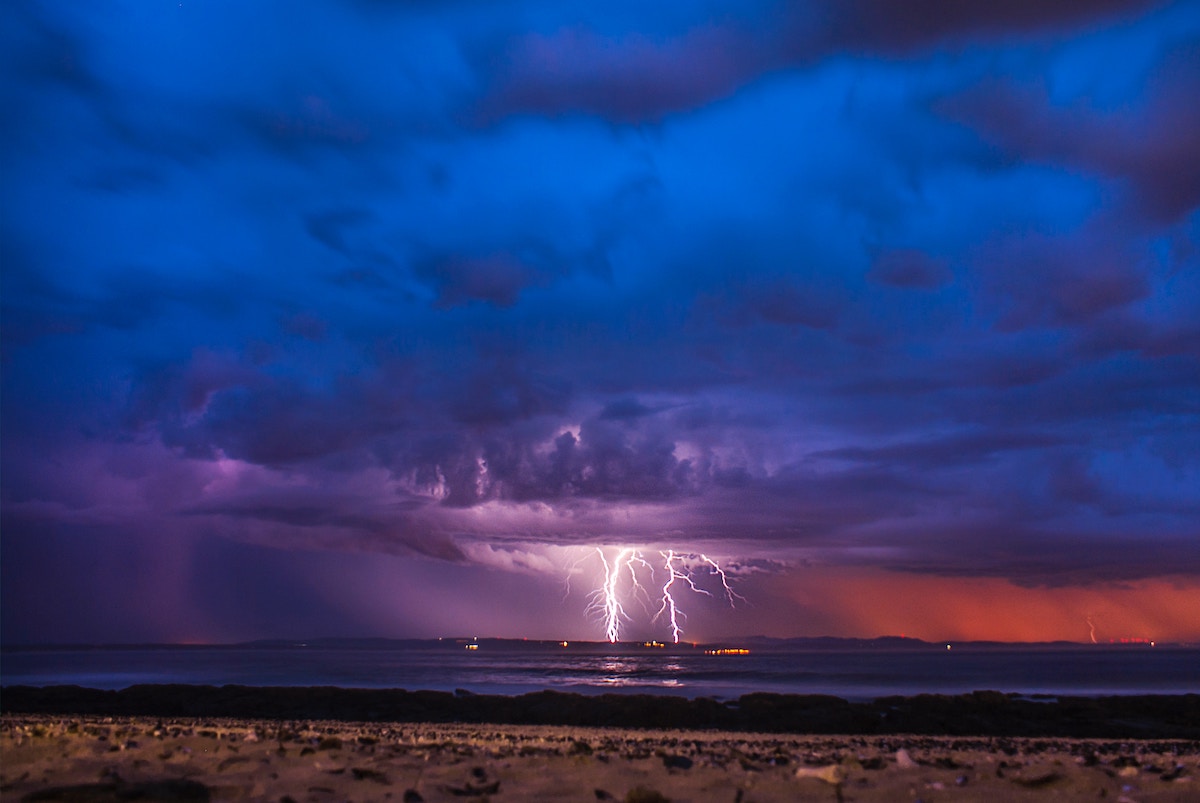As a boater, you’re likely aware of how quickly the weather can change. And there’s a good chance that you enjoy being out on the water in several different conditions.
But what about thunderstorms? How can you protect yourself and your loved ones from intense elements like heavy rain, lightning, and hail while boating? Is it best to race back to shore or take cover where you are? What can you bring with you to help you prepare?
Below, we’ll walk through the answers to these questions and provide our best thunderstorm boating safety tips.
Understanding the Dangers of Thunderstorms While Boating
Being out on the water in the rain may be uncomfortable, but at the same time, it’s fairly safe. When that rain also includes lighting and thunder, however, things change. Water and lightening are a dangerous combination. It’s more likely for lightning to hit a boat on the water than a spot on land. And that strike can lead to electrocution, fire, and loss of electronics.
Along with lighting, heavy rains lower visibility, and strong winds create intense waves. These combined conditions make water one of the worst places to be during a thunderstorm.
Tip #1: Check the Weather Before Hitting the Water
Prevention is often the best plan of action when it comes to thunderstorm boating safety. If you see a chance of a storm when you’ll be on the water, we strongly recommend you reconsider your boating plans.
Use your discretion when planning your trip. Traditional weather apps may show an accurate prediction or leave you confused about whether or not you should go out.
Marine weather apps provide a deeper image into forecasts, often showing radar imagery, barometric pressure, wave cap size, and more. Each of these can be used to further determine the likelihood of thunderstorms or other types of severe weather taking place.
If you’re looking for a radio option, tune into the NOAA National Weather Service’s Marine WX Radio.
Read Next: Best Marine Weather Apps
Tip #2: Learn to Keep a “Watchful Weather Eye”
Weather isn’t always predictable. When you fully understand what the beginnings of a thunderstorm look like, you can prepare for the ones that aren’t forecasted.
Typical thunderstorm warning signs include:
- Large, puffy clouds that darken
- Winds that change direction quickly
- Sudden cooling in air temperature
- Lower atmospheric pressure
You should head to shore if you notice any combination of these signs. If you aren’t convinced that a storm will begin, you can stay near a landing while you watch the weather. If conditions improve, head back out. If they worsen, head to dry land.
Tip #3: Make an Onboard Thunderstorm Boating Safety Plan
Despite your best efforts, you may still end up on the water during a storm someday. Having a plan to protect yourself and your guests when stuck on the water is essential.
To start, consider your nearby shore options. If there’s a landing that’s safe to approach, head there as soon as you can. Getting off the water should always be your primary goal when thunderstorms arise.
If you must stay in your boat, the Coast Guard recommends that you:
- Ensure all riders are wearing their life jackets
- Seat guests on the floor in the center of the boat
- Turn on running lights
- Keep bilges empty
- Move toward shore at the minimum speed that allows forward motion
- Hit waves at a 45-degree angle
- Deploy anchor if stopping is necessary.
The National Weather Service also recommends that you:
- Stay inside the boat cabin if available
- Avoid touching metal and electrical devices
Consider creating a thunderstorm safety kit to keep on board, including:
- Life jackets for every rider
- On board first aid kit
- Radio (in case cell phones aren’t accessible)
- Fire extinguisher
- Visual and sound signaling devices
- Anchor with a line attached
- Oars or paddles
Once you’ve created your safety plan, ensure all passengers know the steps. You may even want to print a copy of your plan to keep in your glove compartment for a visual reminder. Even kids can be involved in preparation — teach them the signs of thunderstorms and the safest places to be so they’re prepared in the event of an emergency.
Read Next: How to Create a Float Plan
Conclusion
We don’t want the fear of thunderstorms to keep you from boating. Nonetheless, it’s important to be prepared for the worst weather conditions every time you hit the water.
Always check the weather before you head out, watch the clouds, winds, and temperature throughout the day, and have a “thunderstorm boating safety plan” ready. By taking these few steps to prepare for bad weather, you and your guests will be better protected no matter what type of weather comes your way.


